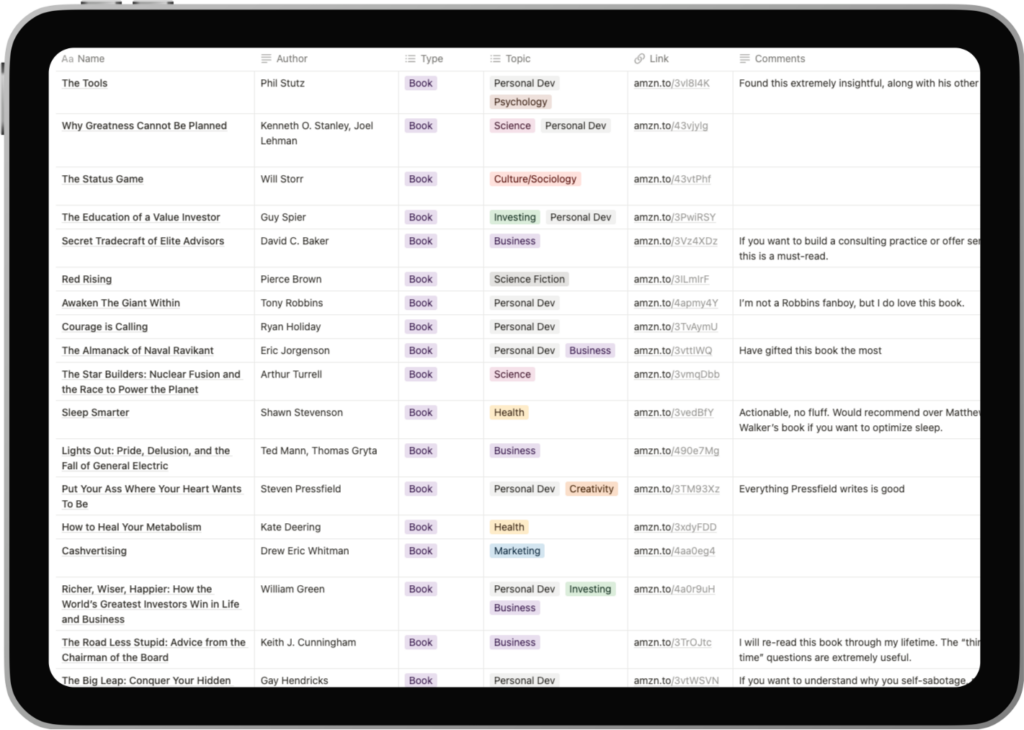Should you work on multiple projects simultaneously?
Or tackle them one at a time?
The temptation of the modern knowledge worker is to do the former—take on multiple projects at once.
It’s tempting because it makes us feel busier. Our mind is busier. We’re constantly jumping from one context to another. We feel more motion.
But it’s almost always an ineffective approach.
The problem with working on multiple projects at once
Sometimes you need to work on multiple projects at once, because life just works that way. And other times, you should (like if you’re trying to build a side hustle while maintaining a full-time job).
Also, I’m talking specifically about work-related projects. Having multiple projects on-the-go across multiple areas of life is a good thing. Having multiple projects on-the-go inside of one area or context is rarely a good thing.
Here’s why…
Working in parallel increases mental load and decreases mental breathing room
The more projects you’re working on at the same time, the more mental load you have.
“Open Loops” as David Allen would call them.
You’re constantly switching between different contexts.
When you’re not working, you’re thinking about the different projects. But in a shallow way, because the different contexts cause you to bounce around.
You try to get into flow and work on a project, but you’re often pulled out of it because another project feels more important (and hey, maybe it is more important, but you wish you hadn’t started it because you don’t feel like doing it now).
When you have high mental load like this—too many open loops—it’s hard to think clearly. It’s hard to work with focus. The quality and quantity of your output suffers. You don’t work as fast or as well.
But when you work sequentially—project-by-project—you have less open loops and more mental breathing room as a result.
Working in parallel = context switching
It takes time to mentally “warm up” when starting a work session or project.
For example, if I’m halfway through writing an article and I stop working on it today and pick it up again tomorrow, it will take me some time to get back into the flow of writing. To be in the right mental context. It might be anywhere from 2-20 minutes.
When working on multiple projects at once, this context switching adds up. A lot. Both on the macro and micro level.
The macro level over weeks and months. Your focus is being split. There’s not much continuity. It’s project A on Monday. Tuesday your attention gets drawn to project B and you switch contexts. You don’t build up the daily momentum around ONE thing.
Then there’s the micro level during the day.
You spend 90 minutes on project A and then work on project B which is significantly different. You incur the context switching time cost.
So maybe it’s anywhere from 15 minutes per day on the low end, to an hour or two on the high-end (it’s possible).
That’s 1.5 – 10 hours of wasted time per week.
When you work sequentially, context switching is much less of a problem because there’s continuity day to day and hour to hour.
Working in parallel = less momentum
The best way to build momentum is to win.
To finish.
To complete.
When you work on multiple projects at once, you’re basically frontloading all the work and delaying all the wins.
For example, let’s say you’ve been working on three projects—all at once—for a few weeks now.
One of them is 50% done. Another is 75% done. The last one is 20% done.
None of them are that close to completion. There’s a lot of work to be done. You feel a lack of momentum because it’s just been an uphill grind with no completion or “success.”
But when you work sequentially, it’s 0-100% on one project at a time.
Because you tend to work faster and more effectively when focusing on one thing at a time, you finish projects faster and build this momentum faster.
Start. Push to finish. Get the win. Feel a sense of accomplishment. Channel that momentum into the next project.
True sequential work is an ideal. Get as close as possible.
It is difficult to work on only one thing at a time.
If you can, then you should. And I would deeply think about how you can.
But maybe you’ve got a mentally demanding day job AND you want to build a side hustle that also requires concentration. Well that’s two projects right there. And maybe you have multiple projects going on at your day job, so really you’re working on 3-4 projects or something.
The important thing is that you get as close to sequential work as possible. So in this example: do not work on multiple side hustle ideas or projects. Just pick one and finish it, or get it to a point where you can clearly judge if it’s worth continuing.
If you have multiple projects on the go, you want to work to minimize them. Eliminate projects that aren’t important. Finish the ones that are. Reduce the plates that you’re spinning.
And remember, each project you add to your plate doesn’t just add more hours of work. It adds more complexity and mental load that take up hours beyond just the work required for that project.
That’s it for this week’s newsletter.
-Sam
P.S. A final anecdote on this topic…
The most productive periods in my entrepreneurship career have been when I’ve had singular focus on one project (or at least, as close as possible to singular focus. There’s always admin and maintenance work to do).
The least productive periods have been when I’ve taken on extra projects, client work, or tried starting a side business despite having one that already needed work.
And almost every time I’ve taken on more, I’ve regretted it. Because it reduces my capacity to focus on the most important project.

